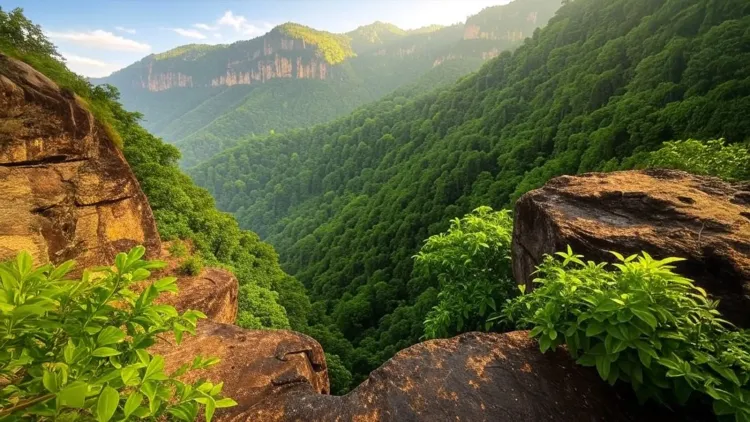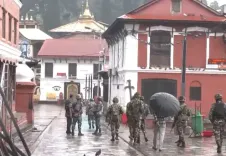Has MP Approved Pachmarhi Land Exclusion for Tourism Development?

Synopsis
Key Takeaways
- 395.95 hectares of land in Pachmarhi has been removed from sanctuary status.
- The land will be reclassified as Nazul, permitting development.
- Tourism and economic activities are expected to grow significantly.
- The decision follows a Supreme Court ruling on land classification.
- The Pachmarhi Land Special Area Development Authority will oversee development initiatives.
Bhopal, May 6 (NationPress) The state government has unlocked avenues for growth in the historic town of Pachmarhi, a charming hill station in Madhya Pradesh and a UNESCO Biosphere Reserve known for its unique plant species. The cabinet led by Dr. Mohan Yadav has sanctioned the removal of 395.95 hectares of land from its sanctuary status, facilitating urban development and economic progress.
In a significant move, Kailash Vijayvargiya, the State Minister for Urban Development, remarked on Tuesday, “This extensive area in Pachmarhi will now be reclassified as Nazul, enabling legal transactions concerning its sale, purchase, and development.”
With this approval, the government is poised to release a revised notification concerning the Pachmarhi Sanctuary.
“In accordance with the Supreme Court’s decision, the Madhya Pradesh government will pursue essential legislative steps once the proposal receives formal cabinet endorsement,” Vijayvargiya highlighted, adding, “The Court’s ruling is unequivocal -- the designated land is no longer considered forest territory. We now possess ample land for development, primarily aimed at boosting the tourism sector.”
The inception of Pachmarhi Sanctuary dates back to June 1, 1977, when it was officially designated under Section 18(1) of the Wildlife Protection Act, 1972. However, the sanctuary’s borders were never distinctly marked, leading to prolonged uncertainty that hindered government and commercial initiatives within its confines.
Thanks to the recent Supreme Court ruling, 395.95 hectares of land will now be formally recognized as Nazul land, paving the way for administrative reorganization.
The Forest Department has already lodged a proposal with the cabinet to obtain authorization for this transition. Once de-notified, the land will be governed by the Pachmarhi Land Special Area Development Authority, ensuring a more efficient approach to development projects and real estate transactions. Up until now, the sanctuary classification severely restricted economic activities in the region.
Despite these limitations, numerous hotels, particularly boutique ones, have flourished in the town over the last twenty years.
Encompassing nearly 5,000 square kilometers, the Pachmarhi Biosphere Reserve is home to diverse rare plant species.
The history of modern Pachmarhi dates back to 1857, when Captain James Forsyth of the British Army of Madras Infantry and Subhedar Major Nathoo Ramji Powar discovered the plateau while traveling to Jhansi.
It was subsequently developed as a sanatorium for British forces in the Central province, with Powar appointed as Kotwal-in-charge of the armory. Until the 1990s, Pachmarhi also functioned as the summer capital for the Central province. The small community primarily falls under the jurisdiction of the Pachmarhi Cantonment Board, which supports the Indian Army. The Indian Army Education Corps (AEC) area is situated within the community.








